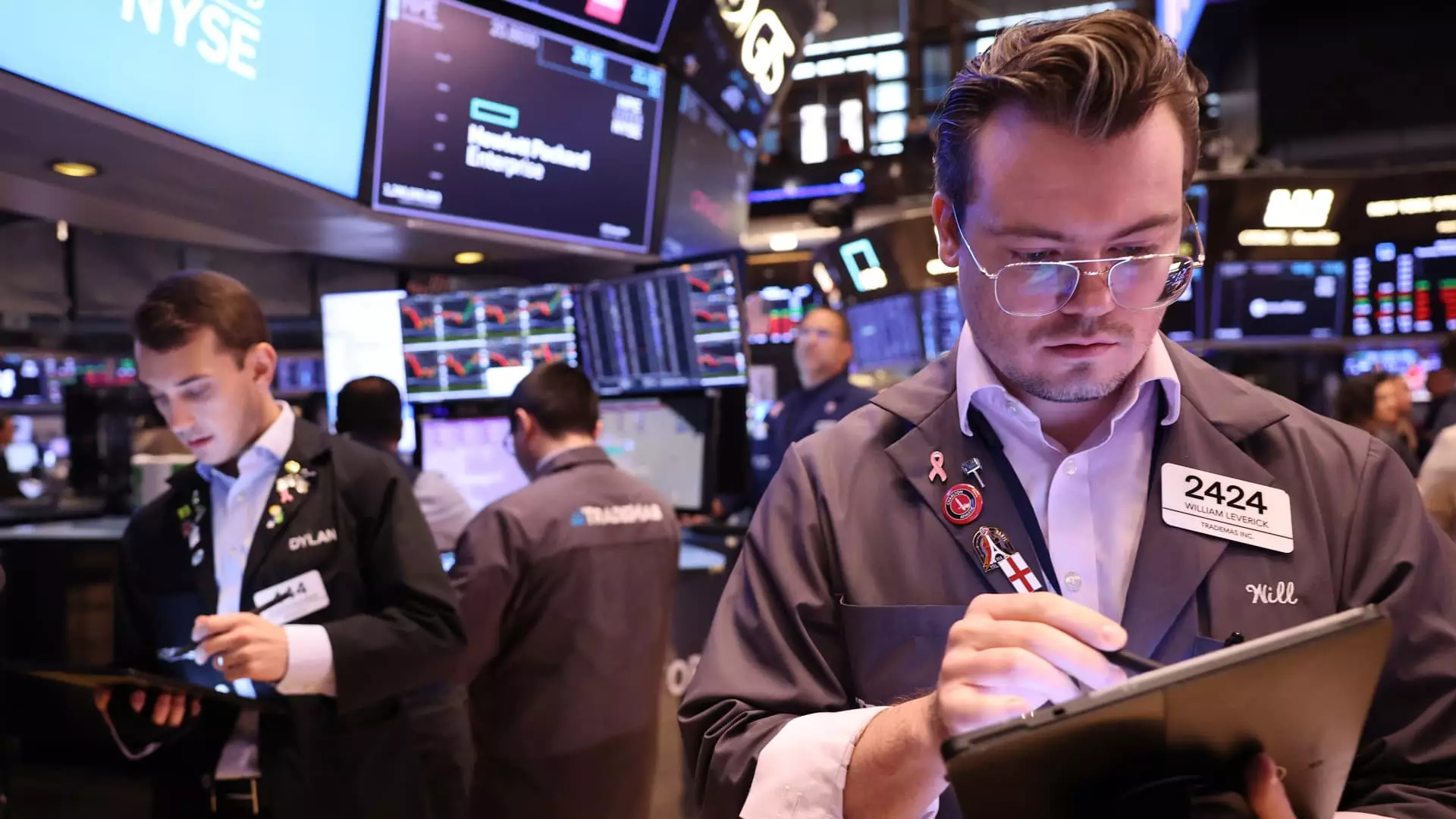In the ever-evolving world of finance, daily newsletters like “Stocks @ Night” play a crucial role in keeping investors informed. Delivered after market hours, it provides a wrap-up of the day’s trading activities while offering insights into what might transpire in the following sessions. As the Nov. 5 presidential election approaches, heightened volatility and the influence of prominent economic factors have captured the attention of investors and analysts alike.
With the Nasdaq Composite reaching a new all-time high, interest in the stock market is palpable. A key subject of discussion has been the remarkable performance of the Trump Media & Technology Group (DJT), which saw its stock price soar nearly 50% over the last few trading days. This spike has elevated its market valuation to a staggering $10.3 billion, surpassing the market cap of venerable institutions like The New York Times. However, despite this rapid growth, DJT shares remain significantly beneath their peak from earlier in the year, indicating potential volatility ahead.
Trends in Prominent Tech Stocks
The technology sector continues to play a vital role in the market’s dynamics. Tesla Inc., for example, has experienced a substantial rise of 20% over a recent week, although its performance stalled in the last trading session. The company’s shares fell by 1%, revealing the unpredictable nature of tech valuations. Analysts are keen to see if broader economic indicators can contribute to a turnaround or if this downturn signals a more significant trend.
In contrast, cryptocurrency is also making headlines. Bitcoin prices recently reached an impressive $73,601.59, marking its highest value since March. The correlation between crypto trends and traditional stock movements offers a fascinating area of study, especially as institutional adoption of digital currencies continues to increase.
As market dynamics shift, bond yields are presenting varied opportunities and risks for investors. A closer examination of the current Treasury yields reveals that the 10-year note is rated at 4.25%. In comparison, shorter-term rates show a slightly more aggressive yield, with the one-month T-bill yielding 4.77%. The rise in these yields raises pertinent questions about the overall investment environment, particularly influencing sectors like real estate and the broader bond market.
The SPDR Bloomberg High Yield Bond ETF (JNK) currently offers a yield of 6.51%, while the iShares iBoxx High Yield Corporate Bond ETF (HYG) trails at 5.87%. Such yields attract bond investors, particularly in a climate of fluctuating stock valuations, underscoring the ongoing search for yield amidst broader economic uncertainties.
As we observe sector-specific movements, several corporations stand out due to their impressive recent performances or noteworthy earnings reports. Advanced Micro Devices (AMD), for instance, has climbed approximately 72% over the past year, even if it saw a slight dip of 7% in after-hours trading. CEO Lisa Su’s upcoming appearance on CNBC could provide further insights into AMD’s strategies moving forward.
In the industrial sector, companies like Caterpillar have experienced a commendable rise of 12.5% over the last three months. The anticipation surrounding their upcoming earnings report has likely contributed to this momentum, indicating that investors remain optimistic about the economic recovery and infrastructure opportunities.
Conversely, major pharmaceutical and biotech firms are in the spotlight this week as significant earnings announcements are anticipated. Eli Lilly’s upward trajectory has seen its stock climb 55% this year, but proximity to its August high showcases the delicate balancing act in stock performance amid market corrections. Contrarily, the disappointing results of companies like Biogen, which has dropped 14% in the last three months, suggest a cautious approach towards biotech stocks.
Homebuilders Under Pressure
As yields rise, a notable trend has emerged within the homebuilding sector, which has begun to falter. The SPDR S&P Homebuilders ETF (XHB) has seen a decline of 8.6% since hitting an October high, prompting concerns regarding the housing market’s sustainability in a rising interest rate environment. Companies such as D.R. Horton and Lennar have particularly struggled, showing double-digit percentage losses in October.
This trend points toward a broader real estate challenge. As mortgage rates climb, the affordability and demand for housing may start to wane, reshaping investment strategies for both institutional and retail investors alike.
The financial landscape remains vibrant and complex, characterized by fluctuating stock prices, changing bond yields, and the interplay between various sectors. While bullish trends in companies like DJT and Tesla capture market attention, underlying concerns about yield increases and sector-specific downturns present challenges that require astute observation and responsive investment strategies. As we look towards the future, all eyes will be on not just the numbers, but the narratives shaping these diverse market activities.

